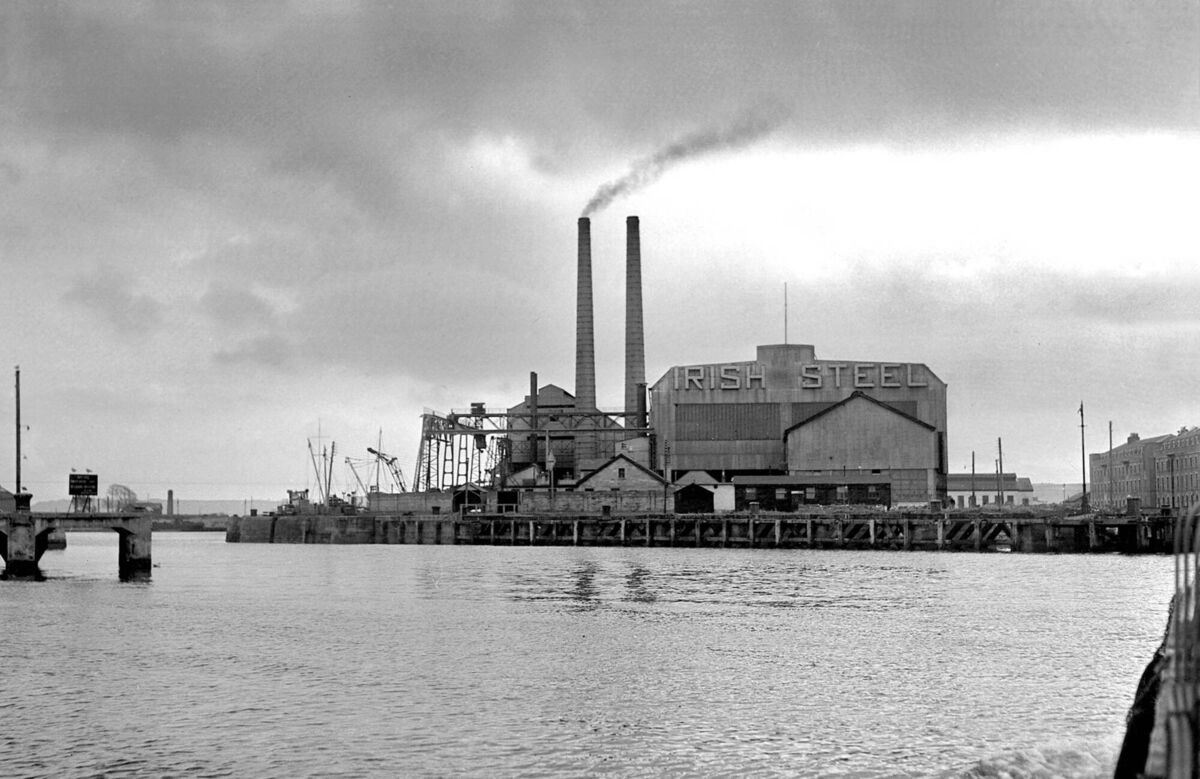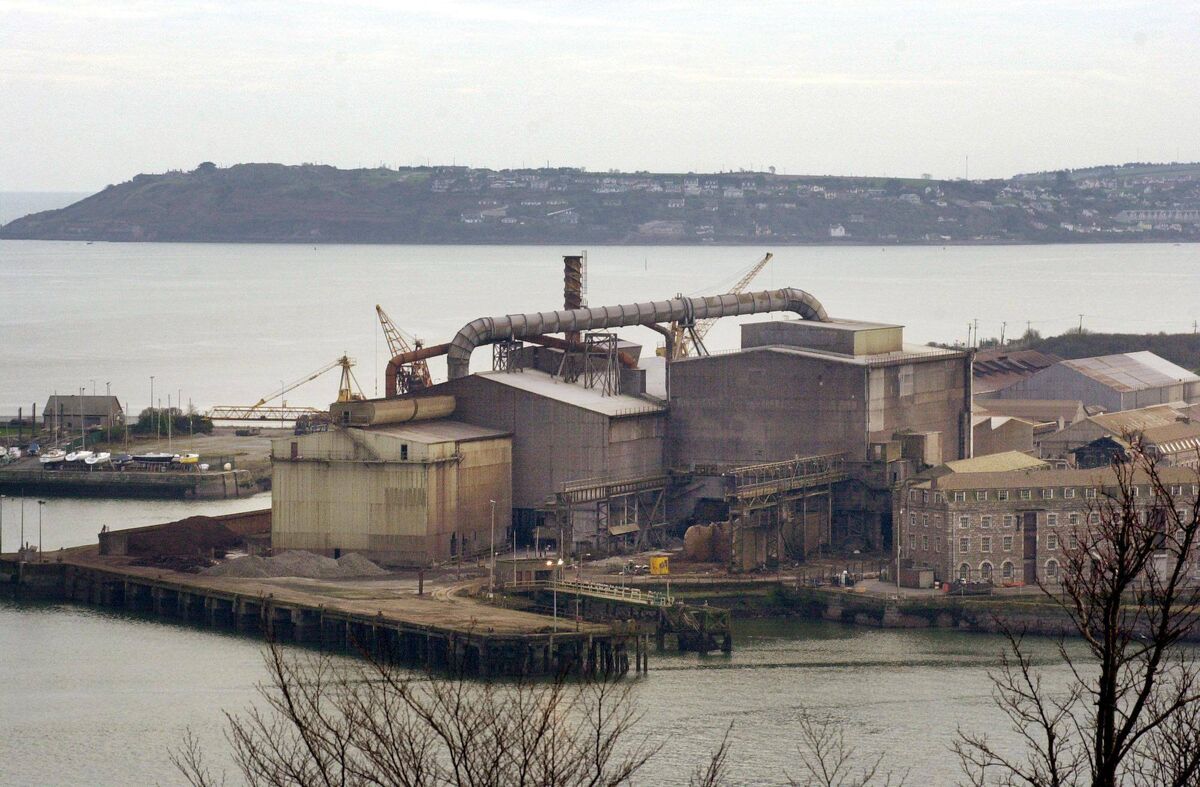State Papers: 'Firm view' £40m sought to save Irish Steel in Cork 'could be put to better use'

Irish Steel worker and Siptu member Jim O'Leary addressing a protest rally in Cobh Co Cork on Sunday, July 17, 1994. Picture: Ted McCarthy/Irish Examiner Archive
The Department of Enterprise and Employment held “the firm view” that £40m sought by Irish Steel in government supports in 1994 to save the troubled Cork-based steel manufacturing plant “could be put to better use for employment creation".
State papers released under the 30-year rule show the Minister for Enterprise and Employment, Ruairí Quinn, remained unconvinced by a survival plan proposed by the company to save 350 jobs at the facility in Haulbowline in Cork Harbour.
Irish Steel had sought £30m in equity from the Government plus a further £10m in loan guarantees to save the ailing steel firm but Mr Quinn believed that a £40m rescue package was “not a prudent use of scarce capital".
However, he observed that once the Government had made a decision in September 1994 that the closure of Irish Steel was to be prevented that “there is no way in which this level of financial exposure could be avoided".
The plant at Haulbowline had already survived for over a decade through cost-cutting programmes with the assistance of injections of millions of pounds from the Government but often against the advice of various ministers.

In a memo for the Government in October 1994, Mr Quinn assessed Irish Steel’s latest request for financial support and noted the rescue plan contained production and sales volumes that had “never been attained before".
The minister noted that Irish Steel previously had a workforce of around 600 people compared to its then staffing level of 350 and the estimated 310 staff that would be employed when the new investments would be made.
The business plan, which carried projections up to June 1998, has assumed capital investment of almost £32m.
State papers show the company had already been forced to revise elements of the plan after a preliminary screening of the proposal by EU officials showed they did not believe it would make Irish Steel viable.
Mr Quinn also observed that although the rescue plan needed to be re-submitted to the European Commission as a matter of urgency, it had not yet been adopted by the board of Irish Steel.
Under the plan, production was forecast to increase from 278,000 tonnes in 1994 to 350,000 tonnes by 1998.
Mr Quinn remarked that the ambitious efficiencies were also matched by an “optimistic” view on steel prices which were predicted would increase from £219 to £241 per tonne over the same period.
Based on the figures, the minister remarked that “the prospect of viability remains uncertain” and that Irish Steel without an investment partner would remain “a very marginal and uncertain enterprise".

“On the basis of the company’s projections, there could be no purely commercial basis for the State investment of IR£30m,” said Mr Quinn.
He added that his department believed the funds “could be put to better use for employment creation, if they could be used to support other alternative projects".
Mr Quinn recorded that an assessment of the business plan concluded that Irish Steel even with State investment was “very marginal” even if projected sales targets were realised.
However, the minister said the Government should ensure that each item contained in the business plan should make a contribution “that more than recovers its own cost” if it did decide to provide the requested funding.
He also warned that the projections could be “greviously upset” by another cyclical downturn in the market for steel.
To limit the Government’s financial exposure, Mr Quinn recommended that it should set a series of yardsticks and milestones that needed to be attained by Irish Steel.
In seeking approval for the State investment for Irish Steel from the European Commission, he suggested that the Government should use the leverage it had over a similar issue with a German steel firm needing state aid.
Plans by the German government to provide financial assistance to Eko Stahl required approval from all EU member states including Ireland.
Documents in a briefing note for the Minister for Finance, Bertie Ahern, show his department supported the approach recommended by his cabinet colleague but said it was “alarming” that the cost of the rescue package had increased from an estimated £25m just three months earlier to £40m.
The Department of Finance noted that the average cost per job created in recent years had been approximately £13,000 but the proposed assistance for Irish Steel worked out at £116,000 per job.
It pointed out that the Government had already contributed £100m to keeping the plant open over the previous decade.
“By any standards, the burden on the taxpayer of keeping Irish Steel open has already gone well beyond reasonable expectations,” said the Department of Finance.
It claimed no assurance had been provided that a further injection of £40m would secure the future of the Haulbowline facility.
In another memo to the government in October 1994, Mr Quinn was pessimistic that the Government could secure approval from the European Commission as he anticipated there would be opposition from other countries anxious to protect their own struggling steel industries.
The minister said the only way the Government could provide funding to Irish Steel in a way in which the investment would not be regarded as state aid would be if it was “made under terms which a private investor would find acceptable".
Irish Steel was eventually sold by the State to Indian tycoon Lakshmi Mittal for £1 in 1996.
The plant, operating under a re-branded name, Ispat, finally closed its doors permanently in June 2001 with the loss of 450 jobs.
A new public facility, Haulbowline Island Recreational Park, was opened on the site of the former steel plant in 2021.











